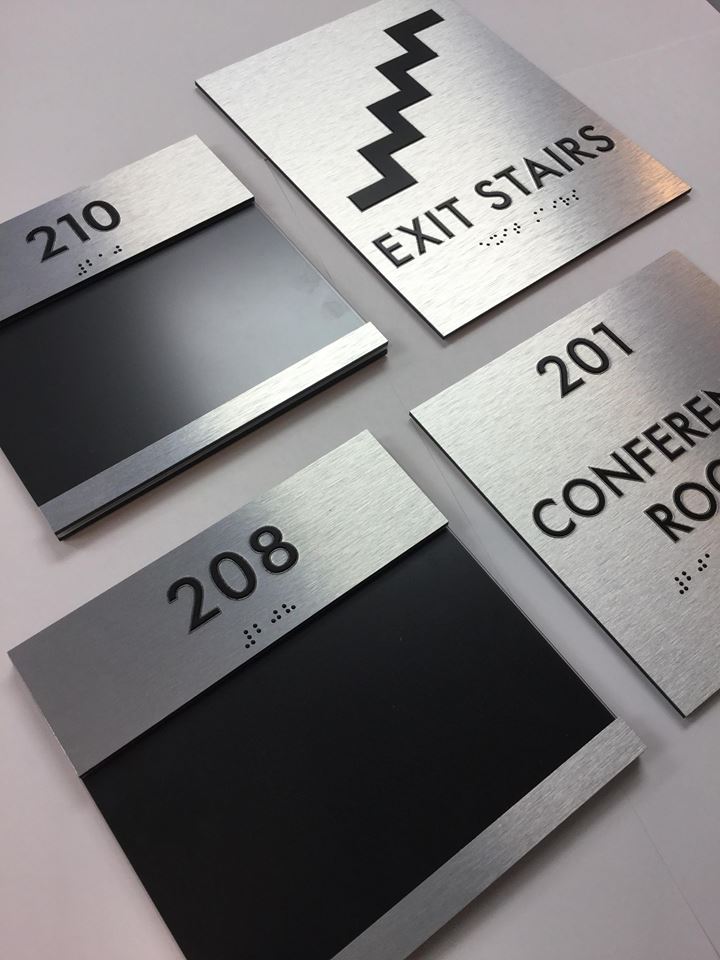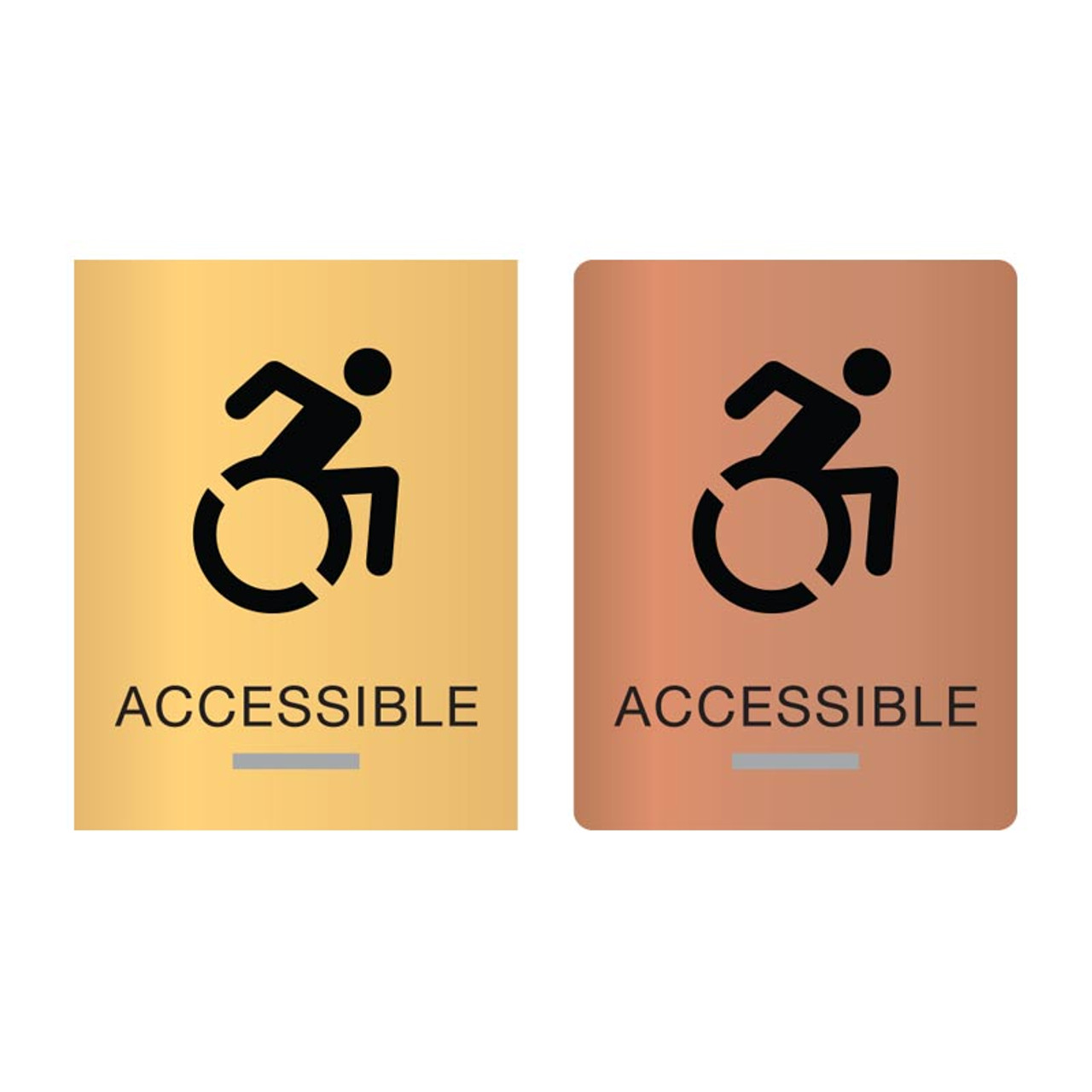Comprehending the Laws Behind ADA Signs
Comprehending the Laws Behind ADA Signs
Blog Article
Exploring the Secret Attributes of ADA Signs for Enhanced Accessibility
In the realm of accessibility, ADA indicators function as silent yet powerful allies, guaranteeing that spaces are comprehensive and accessible for individuals with impairments. By integrating Braille and responsive aspects, these indications break obstacles for the aesthetically damaged, while high-contrast color pattern and readable font styles satisfy varied visual requirements. Additionally, their critical positioning is not arbitrary but rather a computed initiative to assist in seamless navigating. Yet, beyond these features lies a deeper story regarding the evolution of inclusivity and the recurring commitment to creating fair areas. What a lot more could these signs indicate in our pursuit of global ease of access?
Significance of ADA Conformity
Guaranteeing conformity with the Americans with Disabilities Act (ADA) is crucial for promoting inclusivity and equivalent gain access to in public rooms and workplaces. The ADA, passed in 1990, mandates that all public facilities, companies, and transport services fit individuals with handicaps, ensuring they delight in the same legal rights and opportunities as others. Compliance with ADA standards not just satisfies lawful responsibilities yet likewise enhances an organization's online reputation by demonstrating its commitment to variety and inclusivity.
One of the vital facets of ADA compliance is the implementation of accessible signs. ADA indications are developed to ensure that people with specials needs can quickly navigate through structures and rooms.
Moreover, sticking to ADA guidelines can reduce the risk of lawful effects and possible fines. Organizations that fail to follow ADA guidelines may face fines or legal actions, which can be both harmful and financially challenging to their public picture. Thus, ADA conformity is important to cultivating a fair atmosphere for everyone.
Braille and Tactile Components
The consolidation of Braille and responsive elements right into ADA signage personifies the principles of accessibility and inclusivity. These functions are essential for people who are blind or aesthetically impaired, allowing them to navigate public rooms with greater self-reliance and self-confidence. Braille, a tactile writing system, is essential in supplying created details in a format that can be quickly regarded through touch. It is normally positioned under the corresponding text on signs to make certain that people can access the info without aesthetic aid.
Responsive components expand past Braille and consist of elevated characters and signs. These elements are created to be noticeable by touch, enabling people to recognize space numbers, bathrooms, departures, and other vital areas. The ADA establishes details standards relating to the size, spacing, and placement of these responsive aspects to enhance readability and guarantee consistency throughout various environments.

High-Contrast Shade Schemes
High-contrast shade plans play a crucial function in enhancing the exposure and readability of ADA signage for people with visual problems. These schemes are important as they optimize the difference in light reflectance in between text and history, guaranteeing that indicators are quickly noticeable, also from a distance. The Americans with Disabilities Act (ADA) mandates making use of specific shade contrasts to accommodate those with minimal vision, making it a crucial element of compliance.
The efficiency of high-contrast colors lies in their capacity to stand apart in numerous lights conditions, including poorly lit atmospheres and locations with glare. Generally, dark message on a light background or light text on a dark history is employed to achieve optimum contrast. As an example, black text on a yellow or white background provides a raw visual distinction that helps in quick acknowledgment and comprehension.

Legible Fonts and Text Dimension
When thinking about the style of ADA signage, the choice of clear font styles and appropriate message dimension can not be overemphasized. The Americans with Disabilities Act (ADA) mandates that font styles should be sans-serif and not italic, oblique, manuscript, very ornamental, or of unusual form.
According to ADA standards, the minimum text elevation should be 5/8 inch, and it should raise proportionally with checking out distance. Uniformity in text size adds to a natural aesthetic experience, aiding individuals in navigating settings successfully.
Additionally, spacing in between letters and lines is indispensable to legibility. Ample spacing protects against personalities from showing up crowded, enhancing readability. By adhering to click to read these requirements, developers can significantly enhance Click Here availability, ensuring that signage offers its desired purpose for all individuals, despite their aesthetic abilities.
Efficient Positioning Techniques
Strategic positioning of ADA signage is important for maximizing ease of access and making certain compliance with lawful standards. ADA guidelines stipulate that signs need to be installed at a height in between 48 to 60 inches from the ground to ensure they are within the line of sight for both standing and seated individuals.
In addition, signs need to be positioned nearby to the latch side of doors to permit very easy recognition prior to entry. This placement assists people locate areas and rooms without blockage. In cases where there is no door, indications need to be located on the nearest surrounding wall surface. Uniformity in indicator positioning throughout a center enhances predictability, reducing confusion and improving total individual experience.

Conclusion
ADA signs play a vital role in promoting availability by incorporating functions that attend to the requirements of people with specials needs. These aspects jointly promote an inclusive atmosphere, underscoring the significance of ADA compliance in ensuring equivalent accessibility for all.
In the world of availability, ADA indications serve as silent yet powerful allies, making certain that rooms are accessible and comprehensive for individuals with disabilities. The ADA, established in 1990, mandates that all public centers, companies, and transportation services accommodate people with specials needs, guaranteeing they take pleasure in the exact same legal rights and possibilities as others. ADA Signs. ADA indications are developed to guarantee that individuals with specials needs can conveniently browse via buildings and rooms. ADA guidelines stipulate that indicators should be installed at a height site link between 48 to 60 inches from the ground to guarantee they are within the line of sight for both standing and seated individuals.ADA signs play an essential duty in advertising availability by integrating attributes that deal with the demands of individuals with disabilities
Report this page